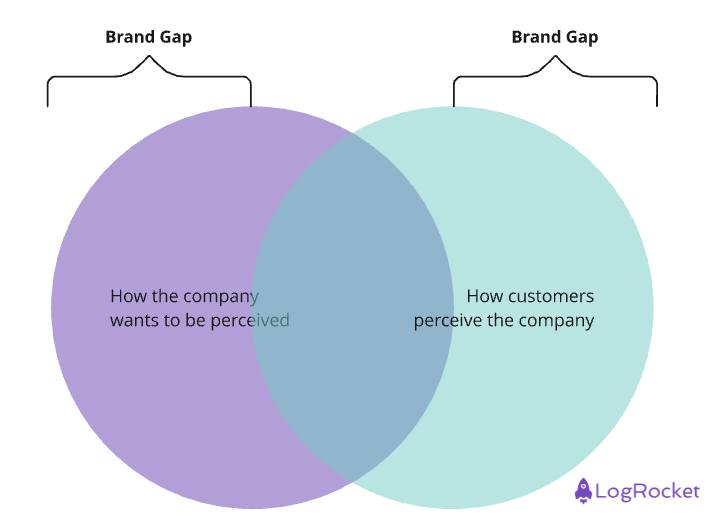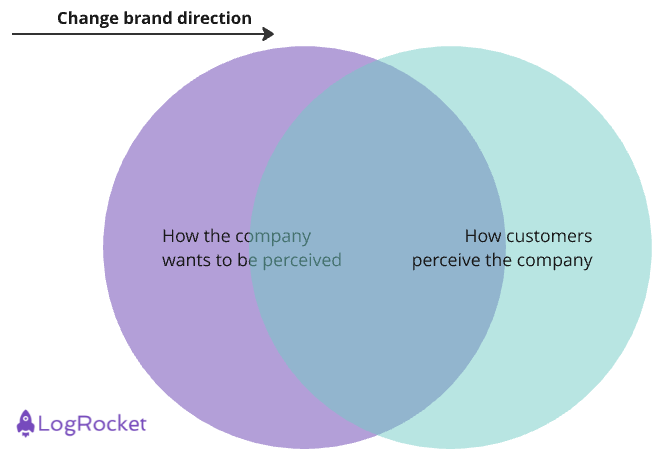
Brand strategy is an essential part of both product and design strategy.
Apple may or may not have the most powerful devices on the market, but this brand of premium simplicity has millions of devoted customers. When Christmas comes, Coca-Cola’s sales spike, not Pepsi’s. Seeing Nike’s logo already gives a small spark of motivation to, well, just do it.
Clearly, brand strategy makes or breaks a brand, and a brand strategist is at the center of this brand strategy.
In this article, I uncover the ambiguity around the role of a brand strategist, starting with what brand strategy really is.
The role of a brand strategy is to give the company:
Brand strategy is more than just visual identity and a logo; it’s a part of a larger company strategy. It is a set of rules, directions, boundaries, and assets that help define the individual brand of a company.
Brand strategy helps answer the questions like — what does the brand mean? Why does the product exist? Who is it for?
You might have the best value proposition out there, but to succeed, it must be communicated and presented in a way that resonates with your target audience. Plus, your product’s unique value prop must be communicated and remembered. And that’s what brand strategy is for.
With brand strategy, you’ll be able to easily answer questions such as:
A solid brand strategy helps the whole company develop a brand that’s memorable and resonates with the audience.
A brand strategist is someone who facilitates the process of discovering and developing the brand strategy. They understand the business objectives, research the customer audience, identify the gap between how the company wants to be perceived and how users perceive it, and recommend a plan to bridge this gap.
Brand strategists don’t focus on visual communication, brand systems, or logos – that’s the role of a brand designer. In smaller companies, though, one person can wear both (and more) hats.
If I were to simplify the responsibilities of a brand strategist, I would narrow it down to these three tasks:
A brand doesn’t exist in a vacuum. It exists to appeal to a specific audience. The very first step to take as a brand strategist is to understand who the audience really is.
An ideal customer profile is the description of a customer who loves your product. They engage more, pay more, retain more, and invite friends without being asked to. Brand strategists need to understand that profile well, as well as adjacent user profiles that the brand can expand to.
The second step is to understand what these people think about the product brand as it is. Do they think it’s fun? Elegant? Expensive? Cheap? Who do they think the product is for? Those are the starting points.
A company usually has a vision of how it wants itself and its products to be perceived, but it’s never fully aligned with how customers perceive the brand. The difference between how the company wants to be perceived and how it actually is perceived is what we call a brand gap.

For example, you might want to be perceived as a family-friendly product, but your customers might perceive you as one focused on individualism. You might also be perceived as cheap, and customers may feel that you are somewhat expensive.
Understanding the gap is the key to brand strategy.
There are two ways to bridge the brand gap.
The most common approach is to implement actions that will change customer perception of the product:

The brand strategist’s role is to maintain a roadmap of initiatives and experiments, such as marketing campaigns, redesigns, and communication guideline improvements, that might impact how customers see the brand.
It also includes overseeing marketing and communication activities to make sure they move the brand in the right direction.
However, sometimes, it makes sense to align the brand strategy to customer perception:

Say you want to be perceived as a premium brand. But 90% of your buyers come to you because they believe you are affordable. It wouldn’t make sense to push for this premium perception, right? You’ll lose customers that way.
It’s the job of a brand strategist to notice when the whole brand vision needs to change and to pitch the new direction to executives.
Brand strategists require a diverse set of skills. The most essential ones include:
Understanding the market from both qualitative and quantitative perspectives is essential to identifying the brand gap. Brand strategists must be versed in various research techniques and able to elicit proper insights from them.
Compared to traditional design, branding requires innovation. You can’t just use best practices and established patterns to create a brand. The brand must be unique, and this uniqueness requires fresh and bold ideas that no one has thought of before.
At the end of the day, branding is all about psychology. If you want to change people’s perceptions, you need to understand what’s going on in their heads, both consciously and unconsciously.
Both internal and external communication skills are essential for a brand strategist.
External communication is essential to establishing the brand voice, and the difference between a great and poor choice of words is enormous.
Internal communication, on the other hand, is essential to collaborate with stakeholders to both understand what brand the company wants to establish and properly pitch ideas to bridge the gap.
A brand strategist isn’t a common role. Many people don’t even know it exists, and there’s even less clarity on how to become one. Let’s try to remove some of this ambiguity:
The traditional college path is becoming increasingly obsolete — the education system simply can’t keep up with the pace of change. But it’s still one of the best ways to differentiate yourself from other candidates and gain fundamental knowledge.
Brand strategy is often one of the specialties of an advertising major (for example, at Temple University), and that would be your best pick.
Secondary options include either marketing, psychology, or communication.
If you are not interested in formal education, there are also some courses worth considering:
This foundational and affordable course on brand strategy is led by Anneli Hansson, one of the most recognized brand strategists out there. This course is a good start if you want to pursue this career track.
Price: $199 for lifetime access
CXL is one of the best sources for marketing-related knowledge out there, and its brand marketing course covers in-depth practical aspects of brand strategy.
Price: $200 per month
Like the courses above, the Brand Identity and Strategy course covers most fundamentals, but it also includes hands-on tasks to reinforce learning.
Price: $59/month with Coursera Plus
A brand strategist is a senior-positioned role, so if you’re just beginning, it’d be wise to target some related entry-level positions first.
Brand design is a perfect starting point for people with an artistic knack.
Less artistic people could consider roles in digital marketing. Aim for positions focused on strategy and communications rather than technical or content roles. Develop your brand strategy skills in the meantime and take it forward from there.
According to Glassdoor, brand strategists can expect between $117,000 and $218,000 salary bracket.
Although this is quite a lucrative range, again, it’s a rather senior position, and you might need to start in a different role, such as:
Bonus tip — Brand specialists are often freelancers who work on a contract basis, and depending on their reputation and portfolio, they might charge significantly higher or lower rates.
Brand strategy is an essential part of company strategy, and a brand strategist facilitates the whole process of formulating and executing the strategy. It starts with identifying and understanding the target audience. Then, the brand strategist identifies the branding gap and pitches a roadmap to bridge the gap.
Strong research, analytical, communication, psychology, and creativity skills are required to do all of that.
Small and medium companies rarely have a dedicated brand strategist, though. In these cases, you can target brand strategy as a role instead of a job. For example, a CMO, CEO, or communication director might wear the hat of a brand strategist as part of their daily responsibilities.
Whoever wears this hat has an enormous responsibility, as the brand can make or break whole companies.
gd2md-html: xyzzy Thu Aug 01 2024
LogRocket's Galileo AI watches sessions and understands user feedback for you, automating the most time-intensive parts of your job and giving you more time to focus on great design.
See how design choices, interactions, and issues affect your users — get a demo of LogRocket today.

Small actions can have large consequences in complex systems. Here’s how UX designers can manage dependencies so users feel informed and in control rather than blocked or blindsided.

This article examines when hero sections are necessary in digital products, when they create friction, and how to evaluate them using UX goals, primary actions, user flow impact, and real-world alternatives.

AI speeds up tasks like research synthesis, ideation, and first-draft wireframes, but it can’t replace clarity, taste, or decision-making. Here’s a grounded look at what AI actually does well in UX right now.

Discover how to craft UX-friendly hero sections with examples, design tips, and strategies that drive engagement and conversion.